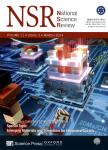Is graphite lithiophobic or lithiophilic?
Is graphite lithiophobic or lithiophilic?作者机构:Institute of New Energy for VehiclesSchool of Materials Science and Engineering Tongji University Department of Nuclear Science and Engineering and Department of Materials Science and EngineeringMassachusetts Institute of Technology
出 版 物:《National Science Review》 (国家科学评论(英文版))
年 卷 期:2020年第7卷第7期
页 面:1208-1217页
核心收录:
学科分类:0808[工学-电气工程] 08[工学] 0805[工学-材料科学与工程(可授工学、理学学位)] 080502[工学-材料学]
基 金:support from the National Key R&D Program of China (2018YFB0905400) the National Natural Science Foundation of China (51802224 and 51632001) support from the National Science Foundation of the United States (ECCS-1610806)
主 题:wetting contact-line hysteresis surface-pinning defects electrochemical-stability windows Li–graphite composite
摘 要:Graphite and lithium metal are two classic anode materials and their composite has shown promising performance for rechargeable batteries. However, it is generally accepted that Li metal wets graphite poorly,causing its spreading and infiltration difficult. Here we show that graphite can either appear superlithiophilic or lithiophobic, depending on the local redox potential. By comparing the wetting performance of highly ordered pyrolytic graphite, porous carbon paper(PCP), lithiated PCP and graphite powder, we demonstrate that the surface contaminants that pin the contact-line motion and cause contact-angle hysteresis have their own electrochemical-stability windows. The surface contaminants can be either removed or reinforced in a time-dependent manner, depending on whether the reducing agents(C6→Li C6) or the oxidizing agents(air, moisture) dominate in the ambient environment, leading to bifurcating dynamics of either superfast or superslow wetting. Our findings enable new fabrication technology for Li–graphite composite with a controllable Li-metal/graphite ratio and present great promise for the mass production of Li-based anodes for use in high-energy-density batteries.



